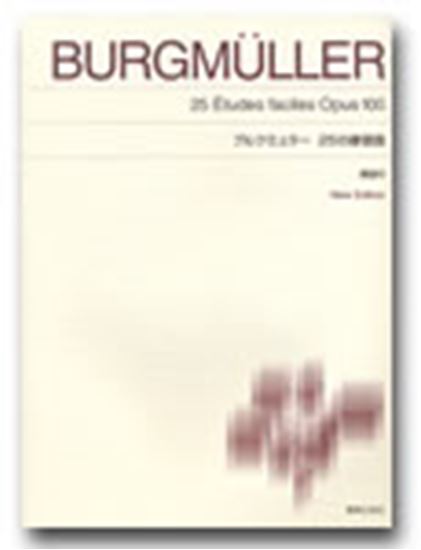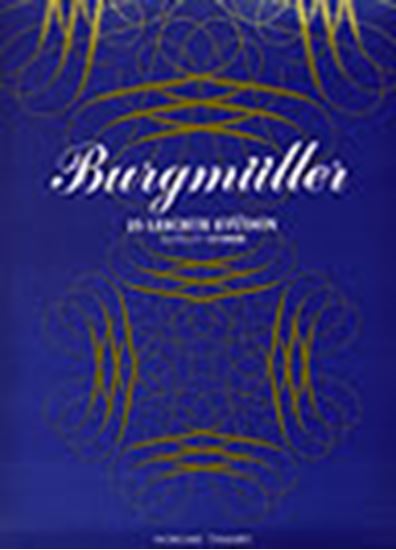Burgmüller, Johann Friedrich Franz : 25 Etudes faciles et progressives, conposées et doigtées expressément pour l'étendue des petites mains Le retour Op.100-23
Work Overview
Genre:etude
Total Playing Time:1 min 00 sec
Copyright:Public Domain
Additional Notes:表記ゆれの例: 帰路 帰途 家路 かえりみち 家にかえって 再会
Commentary (3)
Author : Sato, Takashi
Last Updated: January 31, 2022
[Open]
Author : Sato, Takashi
It is also called "Homecoming" or "Return," but from where is the return? The author's theory is as follows: Since titles reminiscent of Italian scenery continue after No. 19 "Ave Maria," the composer is traveling to Italy at this point. Could this No. 23 be depicting the "return journey" from that trip? It feels as if the joy and relief of gradually approaching familiar cityscapes after a long journey to a foreign land are expressed.
Performance Points (Original tempo: dotted quarter note = 126)
Let's focus on the phrasing of the 8-measure introduction. What is the meaning of the accent appearing on the strong beat for the first time in measure 8? If played at dotted eighth note = 126 as indicated by the composer, it becomes a rather fast and difficult series of repeated chords. Use a motion where the back of the hand is lifted with the wrist as the pivot, with the sensation of not playing all the way to the bottom of the keybed. From measure 17, intense modulations continue. In measure 24, while building a crescendo with momentum, return to the main section all at once.
(From To-on Edition "Burgmüller 25 Etudes" (NS70))
Author : Iida, Arisa
Last Updated: March 15, 2018
[Open]
Author : Iida, Arisa
Musical example provided by: Ongaku no Tomo Sha
Author : Ooi, Kazurou
Last Updated: May 23, 2019
[Open]
Author : Ooi, Kazurou
The performance indication reads molto agitato quasi presto. When the composer indicates molto agitato, it depicts a highly restless and intense psychological state. Although the metronome marking is dotted quarter note = 126, this is likely the maximum speed at which eighth notes can be rapidly repeated. For the purpose of this discussion, we will proceed with the assumption of 126.
Since staccato markings are present throughout the piece, these should generally not be sustained with the pedal. From the second measure onwards, a melodic line enters in the right hand. Since these thirds can be played legato using only the fingers, the pedal should naturally not be used, and the left hand should play staccato. The same applies to measures 4-5. However, measures 6-8 are an exception. These sixths in the right hand cannot be connected using only the fingers; the inner voices would be disconnected. Therefore, the pedal should be used only for these three measures.
The pedal should be used beat by beat, with the purpose of connecting the right-hand line. Since the listener has heard the exact same staccato B in the left hand for five measures, the introduction of the pedal in measures 6-8 will not sound out of place.
PTNA & Partner Channel Videos(17items) View More
Sheet MusicView More
Scores List (25)

(株)東音企画(バスティン)

(株)東音企画(バスティン)

(株)東音企画(バスティン)

(株)エー・ティ・エヌ

(株)全音楽譜出版社

(株)ドレミ楽譜出版社

(株)音楽之友社

KMP(ケイ・エム・ピー) ケイエムピー

(株)ドレミ楽譜出版社

ハンナ(ショパン)

(株)ヤマハミュージックエンタテインメントホールディングス

デプロMP

(株)ドレミ楽譜出版社

(株)全音楽譜出版社

(株)ドレミ楽譜出版社

カワイ出版

カワイ出版

デプロMP

(株)ヤマハミュージックエンタテインメントホールディングス

デプロMP

(株)音楽之友社

(株)共同音楽出版社

Neil A. Kjos Music Company



















